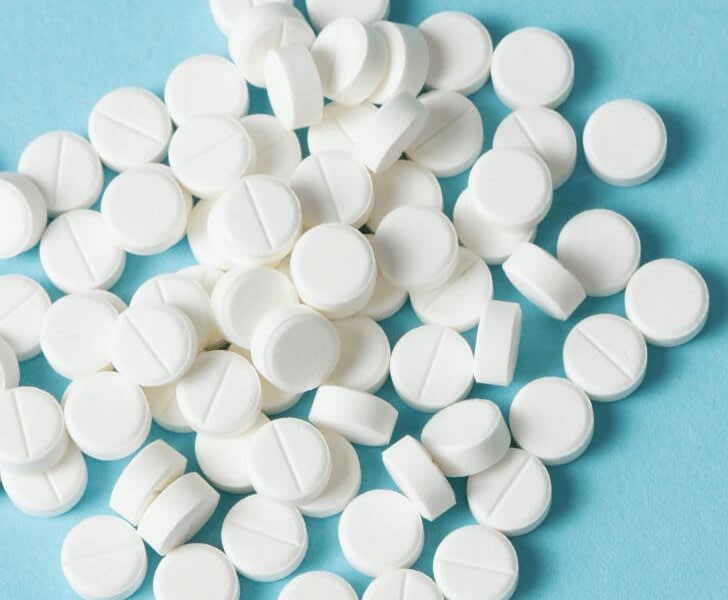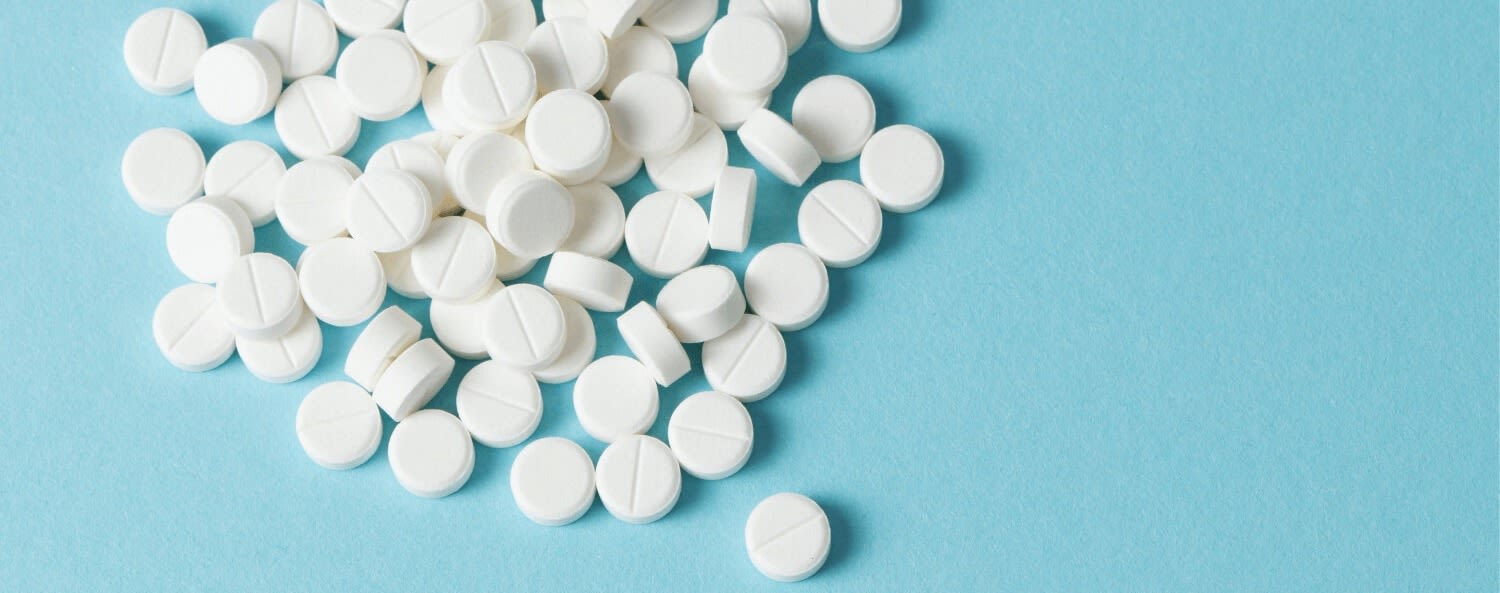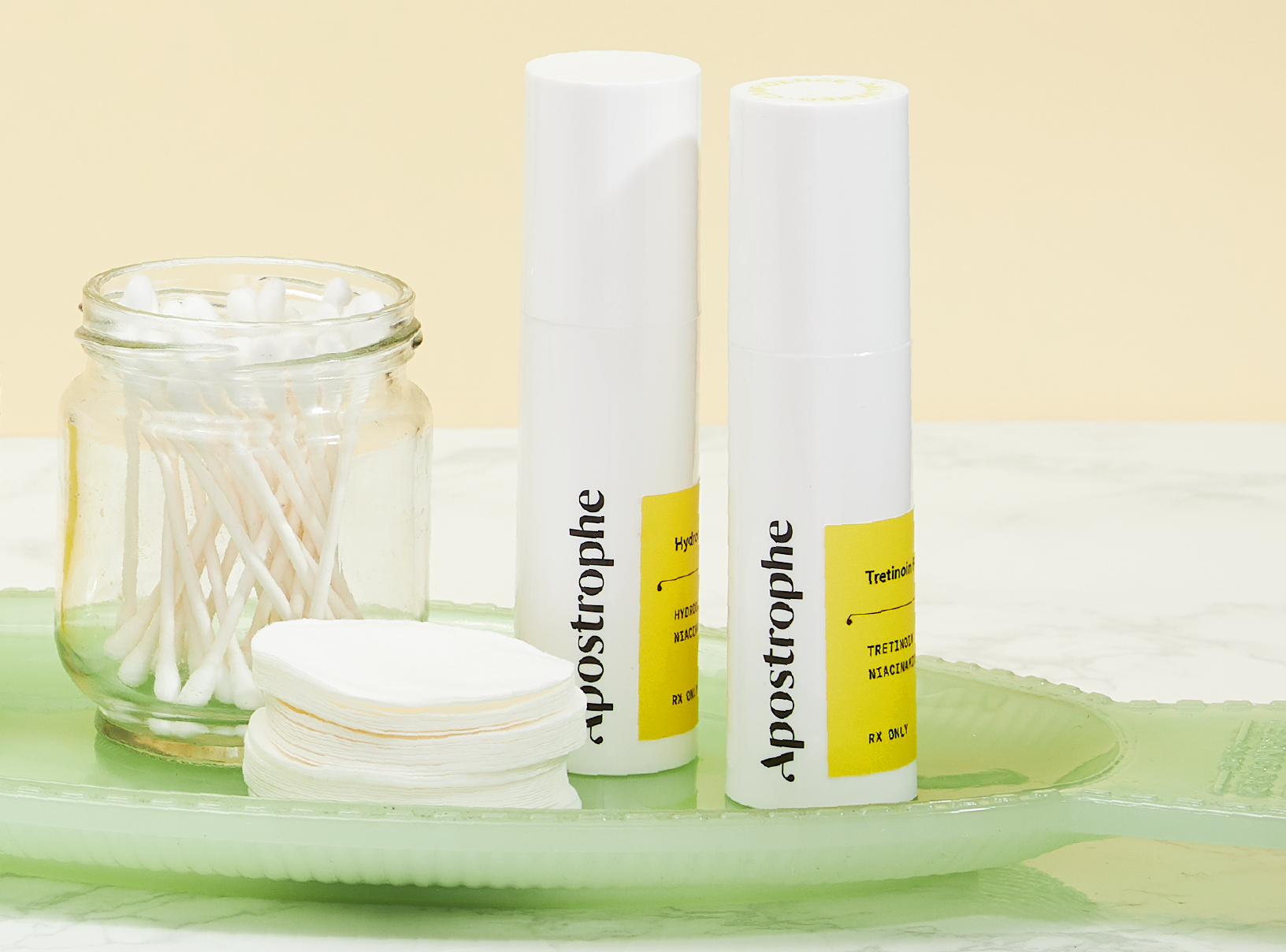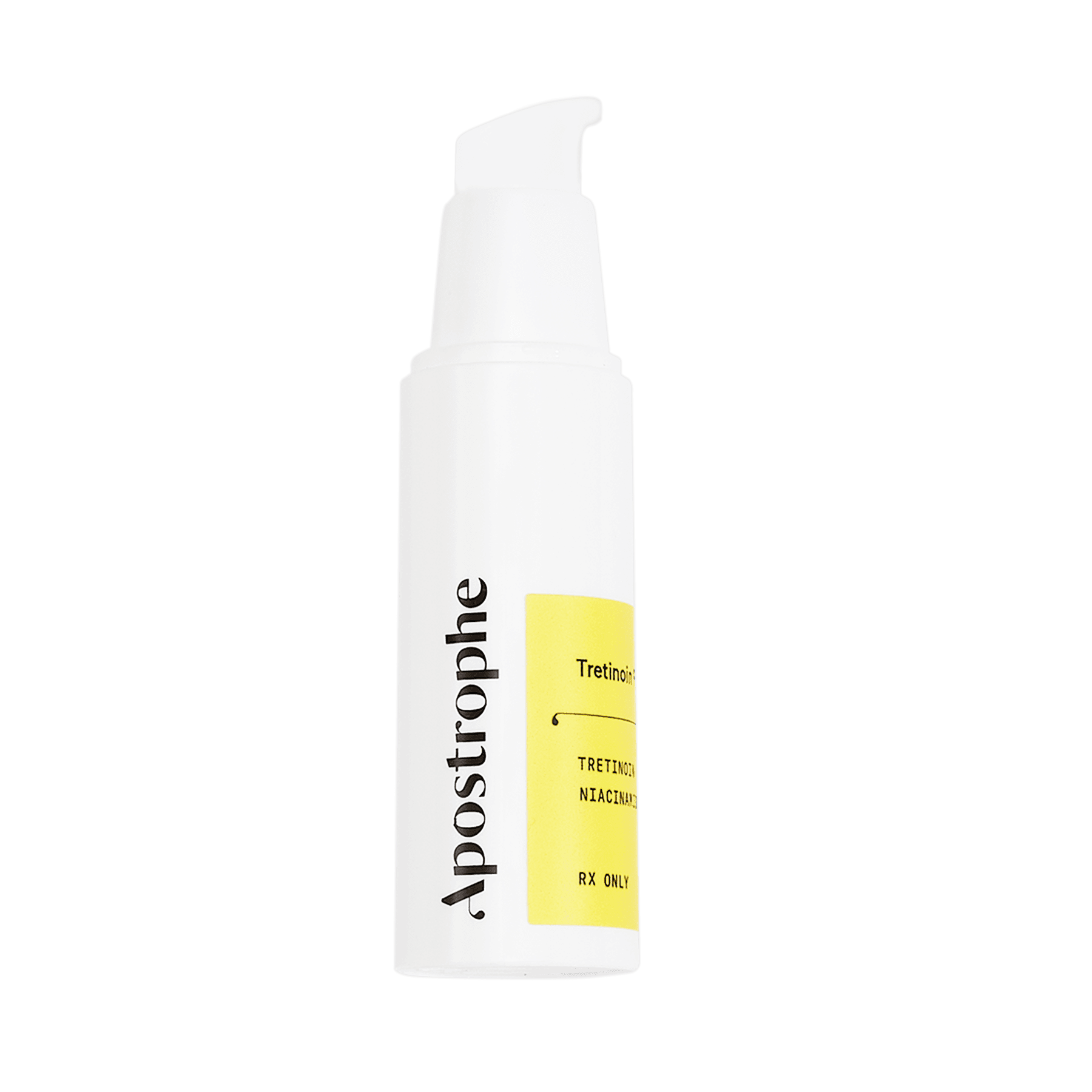Education
13 Best acne medications


SHARE
Education
13 Best acne medications
Medically reviewed by Kristin Hall, FNP
Written by Apostrophe Team
Last updated 11/3/2024
Acne affects just about everyone from time to time.
In fact, research published in the Journal of the American Academy of Dermatology suggests that more than 73 percent of people deal with acne at some point in their lives.
Contrary to popular belief, you don’t need to rely on costly products to treat acne. In fact, many of the most effective acne treatments are inexpensive, science-backed medications that can be purchased online or from your local drugstore.
Below, we’ve explained how acne develops and shared the 13 most effective acne medications available today.
For each medication, we’ve explained how it works to treat acne, as well as how it can fit into a well-rounded skin care routine.
How Acne Develops
Acne develops when your hair follicles (pores) become blocked due to a buildup of dead skin cells and sebum.
When one of your pores becomes clogged, it can develop into a non-inflammatory type of acne lesion called a comedone.
Blackheads and whiteheads are both common forms of comedonal acne.
When certain types of bacteria multiply inside a clogged pore, it can become red, inflamed, and painful.
Common types of inflammatory acne include papules, pus-filled pimples called pustules, and more severe types of acne, such as cystic acne.
A variety of different factors may cause you to develop acne, including your genes, your body’s hormones that stimulate sebum production, sun exposure, certain medication use, and clothing that may rub against and irritate your skin.
Most acne medications work by targeting one or several of the factors that cause acne, from sebum production to dead skin cells, bacteria, or inflammation.
The Best Over-the-Counter Medications for Acne
While the most effective acne medications generally require a prescription, you can buy plenty of effective, science-backed acne treatments over the counter in your local supermarket or drugstore.
Over-the-counter acne medications are ideal for treating mild to moderate forms of acne, such as blackheads, whiteheads, papules, and pustules.
Look for the following active ingredients when you’re comparing cleansers, spot treatments, or other acne products in your local drugstore.
Benzoyl Peroxide
Benzoyl peroxide is a topical medication that can be found in countless acne treatments, from facial cleansers to spot treatments, masks, and more.
As a medication for treating acne breakouts, benzoyl peroxide works by stopping acne-causing bacteria such as Propionibacterium acnes (P. acnes), also known as Cutibacterium acnes, from multiplying inside clogged pores and on the surface of your skin.
Benzoyl peroxide also has mild effects against excess sebum and dead skin cell buildup, which may help prevent acne breakouts from occurring in the first place.
Most acne treatments that contain benzoyl peroxide are designed to be used one to three times per day.
It’s worth noting that although benzoyl peroxide is effective, it can cause mild dryness, erythema (redness of the skin), scaling, and irritation.
Like with other acne medications, these side effects are usually most common during the first few weeks of treatment.
Check out this guide to benzoyl peroxide for acne for more information on how benzoyl peroxide works, as well as how you can fit it into your skin care routine.
Salicylic Acid
Salicylic acid is a beta-hydroxy acid, or BHA, that’s used in cleansers, serums, and other topical acne treatments.
An exfoliant, salicylic acid works by removing the layer of dead skin cells that can build up on your skin over time.
This helps unclog pores, reduce inflammation, and prevent acne from developing.
In addition to acne, salicylic acid is used to treat psoriasis, dandruff, ichthyosis (rough and scaly skin), and other skin conditions.
Like benzoyl peroxide, using salicylic acid can lead to side effects. The most common include stinging in the area where it’s applied and mild skin irritation.
Azelaic Acid
Azelaic acid is a dicarboxylic acid that’s used in many skin care products, including topical acne treatments and products for treating the skin disease rosacea.
As an acne treatment, azelaic acid works by preventing the growth of acne-causing bacteria and reducing dead skin cell buildup.
You can find azelaic acid in facial serums, emulsions, creams, and other topical products. It's one of the ingredients that could be in your Apostrophe topical treatment. After completing a virtual derm consultation, your provider will determine if a prescription is right for you.
This guide to the benefits of azelaic acid goes into more detail about how azelaic acid works for acne, rosacea, and other common skin issues.
Other AHAs and BHAs
Salicylic acid is a BHA (beta-hydroxy acid) that is commonly used to treat acne breakouts and other alpha-hydroxy acids (AHAs) can also be effective.
Common AHAs in skin care include glycolic acid, lactic acid, malic acid, mandelic acid, and citric acid. You can find these ingredients in scrubs, cleansers, masks, toners, moisturizers, and other topical products for treating acne.
These ingredients work by exfoliating your skin. Put more simply, they help loosen and wash away the dead skin cells that can build up on the outermost layer of your skin and contribute to acne breakouts.
Some AHAs and BHAs also have anti-aging effects, making them good ingredients to look for if you’re interested in treating acne and improving your skin’s texture at the same time.
It’s worth noting that many AHAs and BHAs can increase your skin’s sensitivity to sunlight and, in some cases, contribute to sunburn.
To keep yourself safe while using AHAs or BHAs, make sure to apply broad-spectrum, SPF 30+ sunscreen before you spend time outdoors, especially during peak sunlight hours.

HYPERPIGMENTATION TREATMENT
Target dark spots and hyperpigmentation with customized prescription treatment.
Adapalene
Adapalene is a topical retinoid — a type of medication derived from vitamin A. It’s available as a cream, gel, and liquid solution.
Adapalene treats acne breakouts by preventing tiny blocked pores, called microcomedones, from forming on your skin.
Numerous studies have found that adapalene helps to get rid of acne lesions, typically with only mild, tolerable side effects.
Reported side effects of adapalene include redness, scaling, dry skin, itching, and a burning or stinging sensation when it’s applied to your skin.
Although many versions of adapalene require a prescription, you can purchase 0.1% adapalene over the counter in the form of Differin® gel.
Since adapalene is available over the counter, it’s a good “first retinoid” you can use to treat acne without any need for a visit to your healthcare provider.
Niacinamide
Niacinamide is a form of vitamin B3. It’s widely used in skin care products and over-the-counter acne treatments, including creams, serums, and cleansers.
As a skin care ingredient, niacinamide is one of the most versatile around. Research has found that it can lower sebum production, reduce the severity of acne breakouts, reduce inflammation, and even strengthen your skin’s protective barrier function.
Niacinamide is even linked to anti-aging benefits, with research showing it can smooth fine lines and wrinkles.
You can find niacinamide in several types of over-the-counter skin care products, including facial serums formulated to treat and prevent acne. It’s also an ingredient that could be found in your Apostrophe topical treatment.
The Best Prescription Acne Medications
If you have moderate or severe acne, you’ll generally get the best results by using prescription acne medication to treat your breakouts.
Prescription medications for acne tend to be stronger and more effective than options available over the counter.
Many are especially good for treating inflammatory acne or severe acne that forms deep below the surface of your skin.
You can find a full range of acne treatments online, including prescription-strength oral and topical treatments that you can get access to through Apostrophe.
You can also get a prescription for some acne treatments by talking to your primary healthcare provider.
Depending on the severity of your acne, your skin type, and other factors, a healthcare provider may recommend one or more of the medications listed below.
Tretinoin
Tretinoin is a prescription retinoid that’s been used for decades to treat acne. Like other topical retinoids, it’s derived from vitamin A and works by speeding up the skin’s epidermal turnover — which is the process by which the skin creates new cells.

PRESCRIPTION TRETINOIN
Target acne, dark spots, and signs of aging with this science-backed ingredient.
Because of its effects on cellular turnover, tretinoin promotes the removal of dead skin cells that can clog pores and contribute to acne breakouts.
Over the decades, numerous studies have looked at the effectiveness of tretinoin as a treatment for acne.
In a series of two studies published in the Cutis, researchers found that applying tretinoin once daily is an effective, well-tolerated way to treat and prevent acne.
Other studies have produced similar findings, with tretinoin and other topical retinoids referred to as a “mainstay of therapy for acne.”
Although it’s best known as an acne medication, tretinoin is also a powerful anti-aging treatment that can improve the appearance of wrinkles, skin texture , and age spots.
Put simply, it’s an excellent all-round medication for promoting healthy, glowy skin.
It usually takes a few months for tretinoin to start working. During the first few weeks of use, you may notice side effects such as irritation, redness, changes in your skin tone and dryness, flaky skin, or peeling that affects the areas to which tretinoin is applied.
You can buy tretinoin as a topical cream or gel. It’s sold under numerous different brand names, including Retin-A®, Altreno®, Avita®, and Atralin®.
Tretinoin is one of the ingredients that could be in your Apostrophe topical treatment. After completing a virtual derm consultation, your provider will determine if a prescription is right for you.
Clindamycin
Clindamycin is a topical antibiotic. It works by preventing acne-causing bacteria from growing on your skin and inside your pores, making it a great option for treating infected and inflamed forms of acne.
Your healthcare provider may prescribe clindamycin on its own, or in combination with a retinoid to target inflammatory acne from multiple angles.
Like tretinoin, clindamycin is backed up by lots of research. Several studies have shown that it’s effective at reducing the amount and severity of acne lesions when used with other medications, such as benzoyl peroxide and tretinoin.
This guide on clindamycin for acne offers scientific research on clindamycin as an acne medication in more detail.
Clindamycin is available as a lotion, gel, foam, liquid solution, and pledget (swab).
Tazarotene
Tazarotene, commonly sold as Tazorac®, is another prescription retinoid. It’s used to treat acne and psoriasis, a disease that can cause red, flaky areas to develop on the skin.
Like other retinoids, tazarotene works by preventing dead skin cells from building up inside your pores and reducing inflammation.
Several studies have shown that tazarotene cream and foam can reduce the extent and severity of acne, generally with mild to moderate side effects.
Your healthcare provider may prescribe tazarotene 0.1% if you have comedonal acne, or if you have mild to moderate inflammatory acne.
Hormonal Birth Control
Several forms of the birth control pill are effective as acne treatments for stopping breakouts.
In fact, the FDA has approved three oral contraceptives — Yaz, Estrostep, and Ortho Tri-Cyclen, as well as their generic equivalents — as acne medications.
Because of their effects on your hormone production, birth control pills are usually prescribed for hormonal acne breakouts.
Studies have found that birth control pills are effective for most forms of acne, including comedones, pimples, and even nodular or cystic acne.
You can find birth control online following an online consultation with a healthcare provider, and access several birth control pills that can be used to manage and prevent acne breakouts.
Like all medications, the birth control pill can cause certain side effects. It’s important to discuss these with your healthcare provider before using hormonal birth control, whether it’s to treat acne breakouts or serve as a contraceptive.
Spironolactone
Spironolactone is a prescription medication used to treat hyperaldosteronism (a hormonal condition), low potassium levels, heart failure, and other health issues.
It’s also occasionally prescribed off-label as a treatment for stubborn, persistent acne caused by hormonal issues.
Spironolactone works by restricting your body’s production of androgens — which are sex hormones, such as testosterone — that can stimulate sebum secretion and cause acne breakouts.
Your healthcare provider may prescribe spironolactone if you have persistent acne that doesn’t seem to improve with other treatments, especially if you have deep acne that’s located around your jawline, lower face, and neck.
Because of spironolactone’s effects on androgen levels, it isn’t typically recommended for use in cisgender men.
It also isn’t safe for use during pregnancy.
For this reason, your healthcare provider will likely suggest that you use birth control at the same time as spironolactone.
In addition to providing protection against pregnancy, taking the pill can (as mentioned above) make your acne treatment routine more effective.
Oral Antibiotics
Oral antibiotics are often used to treat infected, inflammatory acne such as nodular acne and cystic acne.
Oral antibiotics work by stopping acne-causing bacteria from growing on your skin and inside your pores. This helps reduce inflammation, clear acne breakouts, and stop your acne from coming back.
Several oral antibiotics are used to treat acne, including doxycycline, minocycline, amoxicillin, erythromycin, and trimethoprim/sulfamethoxazole.
Your healthcare provider may prescribe an oral antibiotic on its own or with benzoyl peroxide, topical retinoids, or other medications if you have moderate or severe acne.
Most of the time, you’ll need to use an antibiotic for three to four months to fully get rid of any acne-causing bacteria.
If you’re prescribed an oral antibiotic, it’s essential that you use it for the entire treatment period, even if your acne improves after just a few weeks.
Stopping antibiotics early might cause your acne to come back and make combating bacteria more difficult in the future.
This guide to antibiotics for acne details how antibiotics work for acne and other skin conditions, as well as how you can use them for clearer, pimple-free skin.
Isotretinoin
If you have severe acne, your dermatologist may recommend using an oral medication called isotretinoin to treat it.
Isotretinoin is a powerful oral retinoid. It was previously sold under the brand name Accutane® and is often used to treat acne when other medications aren’t effective.
As an acne medication, isotretinoin is highly effective. It often produces major improvements in your skin, and in some cases, it can even permanently get rid of acne. However, isotretinoin can cause side effects and isn’t for everyone.
Side effects of isotretinoin can include chapped lips, dryness that affects your skin, eyes and/or mouth, and nosebleeds. More notably, isotretinoin can cause severe birth defects if used while pregnant.
In order to use isotretinoin, you’ll need to take part in a safety program from the FDA and keep in close contact with your healthcare provider.
You’ll also need to take a pregnancy test before using this medication, and use multiple forms of contraception to prevent pregnancy.
While these side effects and safety precautions may sound scary, your healthcare provider will work with you to make sure that you use isotretinoin safely and effectively.
The Best Acne Medication for You
Acne is an extremely common skin condition that affects people of all ages. Despite this, many people aren’t aware of the options that are available for treating acne breakouts and preventing them from coming back.
If you have mild acne, the over-the-counter medications listed above can help clear your skin and stop comedones, papules, and pustules from bothering you.
For moderate to severe acne, consider talking to your healthcare provider about using tretinoin, clindamycin, or similar prescription medications to get your acne under control.
To get started treating your acne, you can browse a range of acne treatments online and access prescription-strength products after a consultation with a healthcare provider. You can also learn more about dealing with acne in this guide to what causes acne in adults and what you can do to stop it.
34 Sources
llier, C.N., et al. (2008, January). The prevalence of acne in adults 20 years and older. Journal of the American Academy of Dermatology. 58 (1), 56-59. Retrieved from https://www.sciencedirect.com/science/article/abs/pii/S019096220701081X
Acne. (n.d.). Retrieved from https://www.americanskin.org/resource/acne.php
Sutaria, A.H., Masood, S. & Schlessinger, J. (2021, August 9). Acne Vulgaris. StatPearls. Retrieved from https://www.ncbi.nlm.nih.gov/books/NBK459173/
Matin, T. & Goodman, M.B. (2020, November 24). Benzoyl Peroxide. StatPearls. Retrieved from https://www.ncbi.nlm.nih.gov/books/NBK537220/
Salicylic Acid Topical. (2016, September 15). Retrieved from https://medlineplus.gov/druginfo/meds/a607072.html
Azelaic Acid Topical. (2016, December 15). Retrieved from https://medlineplus.gov/druginfo/meds/a603020.html
Alpha Hydroxy Acids. (2020, August 24). Retrieved from https://www.fda.gov/cosmetics/cosmetic-ingredients/alpha-hydroxy-acids
Tolaymat, L., Dearborn, H. & Zito, P.M. (2021, July 20). Adapalene. StatPearls. Retrieved from https://www.ncbi.nlm.nih.gov/books/NBK482509/
Thiboutot, D., et al. (2006, February). Adapalene gel 0.3% for the treatment of acne vulgaris: a multicenter, randomized, double-blind, controlled, phase III trial. Journal of the American Academy of Dermatology. 54 (2), 242-50. Retrieved from https://pubmed.ncbi.nlm.nih.gov/16443054/
Pariser, D.M., et al. (2005, August). The efficacy and safety of adapalene gel 0.3% in the treatment of acne vulgaris: A randomized, multicenter, investigator-blinded, controlled comparison study versus adapalene gel 0.1% and vehicle. Cutis. 76 (2),145-51. Retrieved from https://pubmed.ncbi.nlm.nih.gov/16209161/
Adapalene. (2016, September 15). Retrieved from https://medlineplus.gov/druginfo/meds/a604001.html
Draelos, Z.D., Matsubara, A. & Smiles, K. (2006, June). The effect of 2% niacinamide on facial sebum production. Journal of Cosmetic and Laser Therapy. 8 (2), 96-101. Retrieved from https://pubmed.ncbi.nlm.nih.gov/16766489/
Walocko, F.M., Eber, A.E., Keri, J.E. Al-Harbi, M.A. & Nouri, K. (2017, September). The role of nicotinamide in acne treatment. Dermatologic Therapy. 30 (5). Retrieved from https://pubmed.ncbi.nlm.nih.gov/28220628/
Gehring, W. (2004, April). Nicotinic acid/niacinamide and the skin. Journal of Cosmetic Dermatology. 3 (2), 88-93. Retrieved from https://pubmed.ncbi.nlm.nih.gov/17147561/
Levin, J. & Momin, S.B. (2010, February). How Much Do We Really Know About Our Favorite Cosmeceutical Ingredients? The Journal of Clinical and Aesthetic Dermatology. 3 (2), 22–41. Retrieved from https://www.ncbi.nlm.nih.gov/pmc/articles/PMC2921764/
Tretinoin Topical. (2019, March 15). Retrieved from https://medlineplus.gov/druginfo/meds/a682437.html
Webster, G., Cargill, D.I., Quiring, J., Vogelson, C.T. & Slade, H.B. (2009, March). A combined analysis of 2 randomized clinical studies of tretinoin gel 0.05% for the treatment of acne. Cutis. 83 (3), 146-54. Retrieved from https://pubmed.ncbi.nlm.nih.gov/19363908/
Yoham, A.L. & Casadesus, D. (2020, December 5). Tretinoin. StatPearls. Retrieved from https://www.ncbi.nlm.nih.gov/books/NBK557478/
Clindamycin Topical. (n.d.). Retrieved from https://medlineplus.gov/druginfo/meds/a609005.html
Ko, H.-C., et al. (2009, March). Prospective, open-label, comparative study of clindamycin 1%/benzoyl peroxide 5% gel with adapalene 0.1% gel in Asian acne patients: efficacy and tolerability. Journal of the European Academy of Dermatology and Venereology. 23 (3), 245-50. Retrieved from https://pubmed.ncbi.nlm.nih.gov/19438817/
Ohlson, J., Dakovic, R. & Berg, M. (2019, April 1). Observational Study of Clindamycin Phosphate and Tretinoin Gel for the Treatment of Acne. Journal of Drugs in Dermatology. 18 (4), 328-334. Retrieved from https://pubmed.ncbi.nlm.nih.gov/31012560/
Clindamycin Topical. (n.d.). Retrieved from https://medlineplus.gov/druginfo/meds/a609005.html
Tazarotene Topical. (2019, June 15). Retrieved from https://medlineplus.gov/druginfo/meds/a616052.html
Gregoriou, S., Kritsotaki, E., Katoulis, A. & Rigopoulos, D. (2014). Use of tazarotene foam for the treatment of acne vulgaris. Clinical, Cosmetic and Investigational Dermatology. 7, 165–170. Retrieved from https://www.ncbi.nlm.nih.gov/pmc/articles/PMC4043801/
Shalita, A.R., et al. (2004, November). Effects of tazarotene 0.1 % cream in the treatment of facial acne vulgaris: pooled results from two multicenter, double-blind, randomized, vehicle-controlled, parallel-group trials. Clinical Therapeutics. 26 (11), 1865-73. Retrieved from https://pubmed.ncbi.nlm.nih.gov/15639698/
Stubborn Acne? Hormonal Therapy May Help. (n.d.). Retrieved from https://www.aad.org/public/diseases/acne/derm-treat/hormonal-therapy
Spironolactone. (2018, February 15). Retrieved from https://medlineplus.gov/druginfo/meds/a682627.html
Kim, G.K. & Del Rosso, J.Q. (2012, March). Oral Spironolactone in Post-teenage Female Patients with Acne Vulgaris. The Journal of Clinical and Aesthetic Dermatology. 5 (3), 37–50. Retrieved from https://www.ncbi.nlm.nih.gov/pmc/articles/PMC3315877/
How Long Can I Take an Antibiotic to Treat My Acne? (n.d.). Retrieved from https://www.aad.org/public/diseases/acne/derm-treat/antibiotics
Sutaria, A.H., Masood, S. & Schlessinger, J. (2021, August 9). Acne Vulgaris. StatPearls. Retrieved from https://www.ncbi.nlm.nih.gov/books/NBK459173/
Baldwin, H. (2020, September). Oral Antibiotic Treatment Options for Acne Vulgaris. The Journal of Clinical and Aesthetic Dermatology. 13 (9), 26–32. Retrieved from https://www.ncbi.nlm.nih.gov/pmc/articles/PMC7577330/
Isotretinoin: Overview. (n.d.). Retrieved from https://www.aad.org/public/diseases/acne/derm-treat/isotretinoin
Isotretinoin: The Truth About Side Effects. (n.d.). Retrieved from https://www.aad.org/public/diseases/acne/derm-treat/isotretinoin/side-effects
Isotretinoin. (2018, August 15). Retrieved from https://medlineplus.gov/druginfo/meds/a681043.html
Shop this post

Tretinoin

Clindamycin

Finacea (azelaic acid)
Like what you just read? Sign up for our email list to get the scoop on skincare science delivered straight to your inbox.

Deep Dives
A dermatologist shares his thoughts on the recent studies about benzoyl peroxide and benzene.
Read More
Education
What is milia?
What is milia? Today, we’re jumping into one type of bump that you may have heard about most commonly in infants — milia.
Read More
Education
Best moisturizer for acne-prone skin
If you have combination acne-prone skin, figuring out which moisturizer is best for your skin might be tough. In this guide, we break down the best moisturizer for combination, acne-prone skin.
Read More